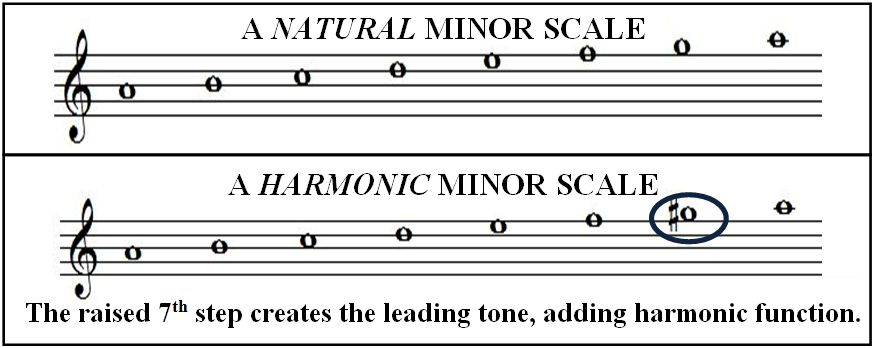The Three Forms of the Minor Scale
NATURAL — HARMONIC — MELODIC
Traditionally, there are 3 different forms of minor scales. In all of the minor scale variations, the first 5 steps remain the same.

Some musicians view the minor, as an emotional or sad mode. I picture the minor mode expressing soulful and dramatic qualities.

In the key of A Minor, the leading tone pitch is G#.


Listen to A Harmonic Minor Scale
Listen to A Natural Minor Scale
A Minor Home Natural Minor Aeolian Mode The Three Forms of the Minor Scale Raising the 7th Step
Harmonic Minor Augmented Intervals Melodic Minor Minor Key Signatures Relative Major and Relative Minor
Relative Major and Relative Minor Key Signatures Preparing for A Minor Scale Drills Rules of Accidentals
Violin Fingerboard Diagram Viola Fingerboard Diagram Cello Fingerboard Diagram Bass Fingerboard Diagram
A Minor Scale Pattern Drills La Cinquantaine
Harmonic Minor Augmented Intervals Melodic Minor Minor Key Signatures Relative Major and Relative Minor
Relative Major and Relative Minor Key Signatures Preparing for A Minor Scale Drills Rules of Accidentals
Violin Fingerboard Diagram Viola Fingerboard Diagram Cello Fingerboard Diagram Bass Fingerboard Diagram
A Minor Scale Pattern Drills La Cinquantaine
The step that differentiates the minor mode from the major mode is the 3rd step of the scale. This very important step of the minor scale is one half-step lower than the 3rd step of a major scale.
You already learned the Natural Minor scale. Everyone has experienced the role of the 7th step of the scale as a leading tone when exploring music in major keys.
Leading tones direct scale notes back to the home note, the tonic. While employing the minor mode, composers often wish to include the power of the leading tone. By raising the 7th step of a natural minor scale, a leading tone is created.
Let’s compare the natural and harmonic minor scales built on A.




